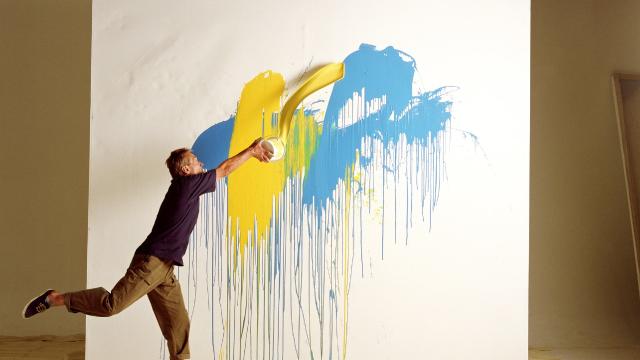When you think about creativity, who do you imagine? A tortured artist, perhaps? A child without preconceived notions of the world? A group of people brainstorming, or someone who comes up with a mind-blowing idea while stoned? All of these represent myths we tell ourselves about creativity. If you’re not one of those folks, good news: Creativity is for you, too.
Last year, a group of researchers surveyed people on their beliefs about creativity. They found that several incorrect beliefs were very popular. The paper states: “The findings highlight the need for better communication of evidence-based knowledge to enable more effective support for creativity.”
In other words, a lot of us have convinced ourselves that creativity is for other people — when really it’s for everyone.
Myth: Creativity is just for the arts
Before we can talk about where to find creativity, we need to define it. There is disagreement, of course, but one way to put it is that creative ideas are both novel and judged by others to be useful. Another definition says that creativity is “the ability to transcend traditional ideas, rules, patterns, relationships, or the like, and to create meaningful new ideas, forms, methods, interpretations, etc.”
New ideas are certainly welcome in art, writing, and other traditionally “creative” pursuits, but creativity isn’t limited to those. When a scientist or engineer comes up with an innovative new idea, that’s creativity. When you’re negotiating a contract and come up with an unexpected idea that makes both parties happy — would you take this if we also gave you that? — that can be creativity, too.
Myth: Creativity comes from the right side of the brain
The idea that we use our right and left hemispheres for different tasks does have a basis in neuroscience, but that concept escaped the lab long ago and has become one of those things that people repeat without really understanding where it comes from.
Most brain functions do not live exclusively on one side of the brain or the other. And it’s impossible to pin down something as nebulous as creativity to just one side. What’s more, there’s not a meaningful distinction between “left-brained” and “right-brained” people. You need both sides of your brain to do your best creative work — and likewise to do maths or other supposedly left-brained activities.
Myth: Creativity is innate
We often associate creativity with tortured geniuses, people whose creativity either results from or contributes to mental illness. This allows us to think of creativity as kind of a curse, something that most of us don’t have, and if we had it, we might not want it.
On the flip side, creativity is sometimes thought to be a thing we’re born with — children are creative, right? — and that when we become adults, most of us lose it.
But neither of these are really true. Research on creativity has shown that coming up with new and useful ideas is a skill that can be learned, and we get better at it with practice. For every great composer or chef or engineer, there are thousands more who work in the same field as a hobby or a job and have no shortage of novel ideas. For every great award-winning writer, there are a ton of us bloggers who do pretty OK.
How to become more creative
So how can you develop creativity if you’ve never thought of yourself as creative?
One way is to make time for hobbies or activities where creativity is the whole point. One study found that people were happier on the days following creative pursuits. These included making crafts, playing music, writing fiction or poetry, and cooking new recipes. The results suggest that simply making time for these activities can benefit you, even if you don’t have some kind of creative breakthrough every time you sit down with your needles and yarn.
Another is to go for a walk. We already know that exercise is good for mental health, and there is research that suggests that walking can help with creativity, specifically. Being outdoors will give you more to see and experience, which can give your brain some exercise as well as your body.
Also consider this time-honoured advice from a variety of creative professions: To make good work, you need to make a lot of work. Early in my writing career, I got the advice that if I was ever stuck on a headline or title, I should write down ten different options. Even if your third idea seems perfect, the exercise requires you to keep going and still do seven more. Often one of those later ideas ends up being a keeper.
Another variation on that idea is the 30 circles exercise. You have 30 small circles on a piece of paper, and a timer set for three minutes. In that time, fill as many of the circles as you can with whatever ideas come to mind. Besides looking at your individual drawings, you can also reflect on the similarities and differences between the things you came up with, and look for a theme. We often don’t know what ideas we really have until they’re on paper in front of us, so start creating and see what happens.

Leave a Reply
You must be logged in to post a comment.